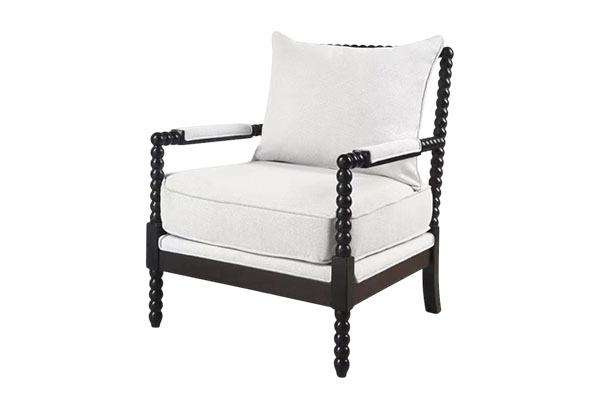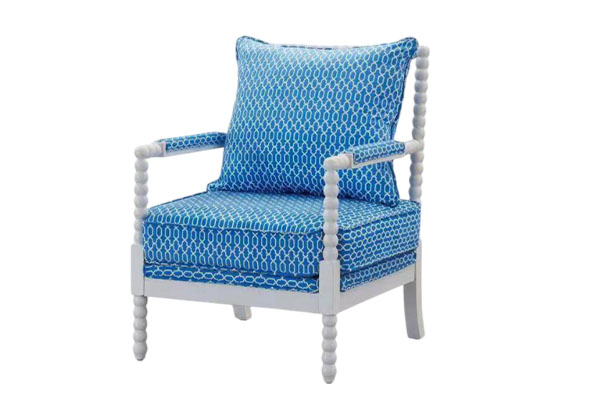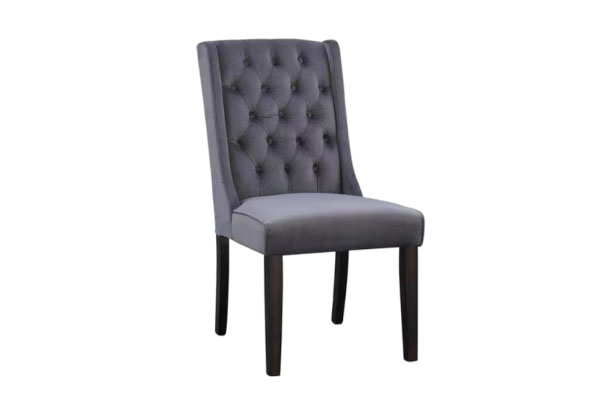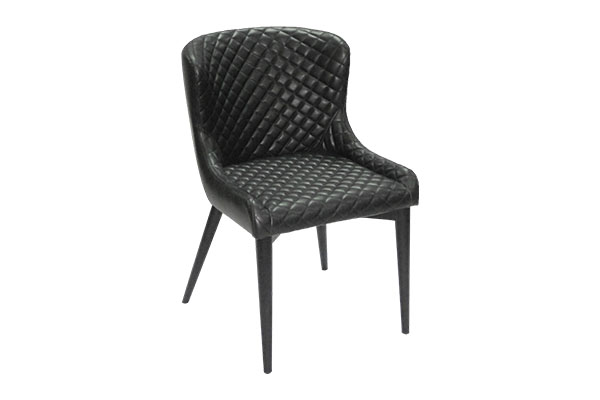What kind of protection does the anti-slip measures of dining chair provide for the safety of users?
Release Time : 2025-05-28
In the modern home environment, dining chair is not only an important tool for daily dining, but also a space carrier for family members to stay and communicate for a long time. Therefore, its safety has become one of the core elements that cannot be ignored in the design and manufacturing process. Especially in terms of anti-slip performance, reasonable anti-slip measures not only improve the stability of use, but also provide users with all-round safety protection invisibly.
First of all, from the overall structure, many high-quality dining chairs use materials with high friction coefficients, such as rubber or soft plastic, in the design of the bottom foot pad. Such materials can effectively enhance the contact force between the chair and the ground, and prevent sliding caused by slight movement or center of gravity shift. Whether on a smooth tile floor or a slightly rough wooden floor, these foot pads can firmly "grasp" the ground to ensure that the chair remains stable during use. This design is especially suitable for families with elderly people and children, and can provide stronger safety support when they stand up or sit down, avoiding accidental falls caused by sliding.
Secondly, some dining chairs also incorporate the concept of anti-slip in the selection of seat materials. For example, some fabric or leather seats will use a surface treatment process with a subtle texture, which can not only improve the tactile comfort, but also increase the friction between the human body and the seat surface to a certain extent. This design prevents people from sliding easily when changing their sitting posture, especially during eating, so that users can enjoy the food more attentively without worrying about the inconvenience and risk of sliding out of the seat or unstable posture. In addition, for some work meals or family gatherings that require long-term sitting, this anti-slip design can also relieve the fatigue caused by frequent adjustments to the sitting posture.
Not only that, in terms of detailed structure, some professionally designed dining chairs also improve the overall anti-slip performance by strengthening the stability of the leg connection. For example, the mortise and tenon structure or metal reinforcement is used for fixing, so that the various parts of the chair are closely combined to reduce the overall shaking or displacement caused by looseness. This structural optimization not only enhances the durability of the chair, but also largely avoids personal injuries caused by sudden tilting or slipping of the chair. At the same time, the stable structure can also make users feel more at ease when leaning or turning around, thereby enhancing the overall confidence and comfort experience.
In public places or commercial spaces, such as restaurants, cafes and other high-frequency use occasions, the anti-slip performance of dining chairs is particularly important. These places are usually crowded and frequently used. If the chairs do not have good anti-slip function, they are very likely to slide or even tip over due to wet ground or people walking. Therefore, many commercial dining chairs have specially strengthened the anti-slip mechanism at the beginning of their design, such as increasing the foot contact area, adding anti-slip stripes or setting an anti-slip base with adjustable height. These measures not only improve the adaptability of the chair in various environments, but also create a safer and more stable dining atmosphere for customers.
In addition, for special groups, such as the elderly, pregnant women or people with limited mobility, the importance of anti-slip design is more prominent. These people move slowly when getting up and sitting down, and have higher requirements for the stability of the chair. A dining chair with good anti-slip performance can provide them with more solid support, reduce the risk of falling due to sliding, and also reduce the worries and burdens of family members or caregivers.
In summary, the anti-slip measures of dining chairs are not just simple physical protection measures, but also a comprehensive safety guarantee system that runs through design, materials, structure and usage scenarios. It silently protects the safety of every user, making every meal more relaxed and secure. Whether in family life or public space, anti-slip design has subtly enhanced the functional value and humanistic care of furniture, becoming an indispensable and important part of modern furniture.
First of all, from the overall structure, many high-quality dining chairs use materials with high friction coefficients, such as rubber or soft plastic, in the design of the bottom foot pad. Such materials can effectively enhance the contact force between the chair and the ground, and prevent sliding caused by slight movement or center of gravity shift. Whether on a smooth tile floor or a slightly rough wooden floor, these foot pads can firmly "grasp" the ground to ensure that the chair remains stable during use. This design is especially suitable for families with elderly people and children, and can provide stronger safety support when they stand up or sit down, avoiding accidental falls caused by sliding.
Secondly, some dining chairs also incorporate the concept of anti-slip in the selection of seat materials. For example, some fabric or leather seats will use a surface treatment process with a subtle texture, which can not only improve the tactile comfort, but also increase the friction between the human body and the seat surface to a certain extent. This design prevents people from sliding easily when changing their sitting posture, especially during eating, so that users can enjoy the food more attentively without worrying about the inconvenience and risk of sliding out of the seat or unstable posture. In addition, for some work meals or family gatherings that require long-term sitting, this anti-slip design can also relieve the fatigue caused by frequent adjustments to the sitting posture.
Not only that, in terms of detailed structure, some professionally designed dining chairs also improve the overall anti-slip performance by strengthening the stability of the leg connection. For example, the mortise and tenon structure or metal reinforcement is used for fixing, so that the various parts of the chair are closely combined to reduce the overall shaking or displacement caused by looseness. This structural optimization not only enhances the durability of the chair, but also largely avoids personal injuries caused by sudden tilting or slipping of the chair. At the same time, the stable structure can also make users feel more at ease when leaning or turning around, thereby enhancing the overall confidence and comfort experience.
In public places or commercial spaces, such as restaurants, cafes and other high-frequency use occasions, the anti-slip performance of dining chairs is particularly important. These places are usually crowded and frequently used. If the chairs do not have good anti-slip function, they are very likely to slide or even tip over due to wet ground or people walking. Therefore, many commercial dining chairs have specially strengthened the anti-slip mechanism at the beginning of their design, such as increasing the foot contact area, adding anti-slip stripes or setting an anti-slip base with adjustable height. These measures not only improve the adaptability of the chair in various environments, but also create a safer and more stable dining atmosphere for customers.
In addition, for special groups, such as the elderly, pregnant women or people with limited mobility, the importance of anti-slip design is more prominent. These people move slowly when getting up and sitting down, and have higher requirements for the stability of the chair. A dining chair with good anti-slip performance can provide them with more solid support, reduce the risk of falling due to sliding, and also reduce the worries and burdens of family members or caregivers.
In summary, the anti-slip measures of dining chairs are not just simple physical protection measures, but also a comprehensive safety guarantee system that runs through design, materials, structure and usage scenarios. It silently protects the safety of every user, making every meal more relaxed and secure. Whether in family life or public space, anti-slip design has subtly enhanced the functional value and humanistic care of furniture, becoming an indispensable and important part of modern furniture.







